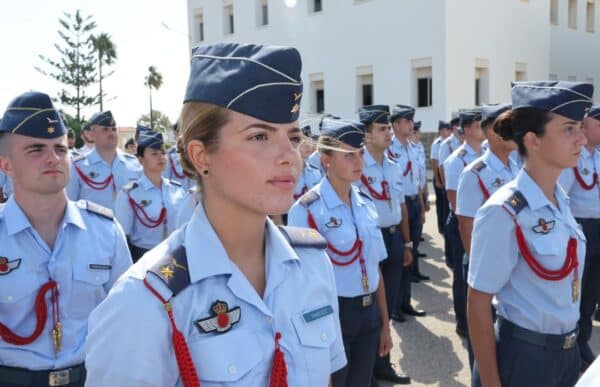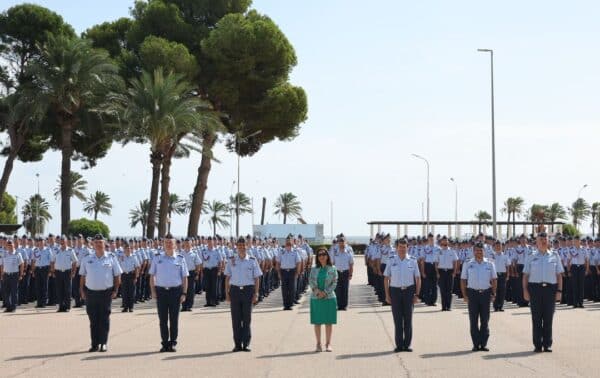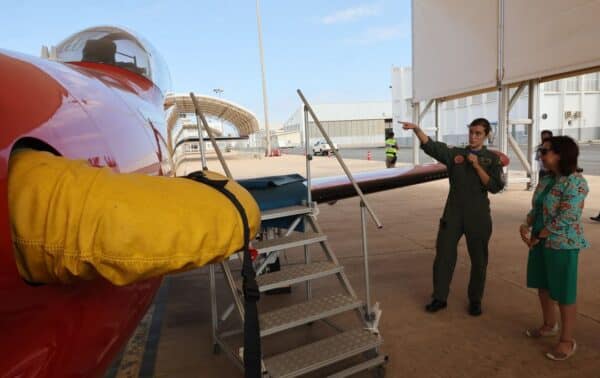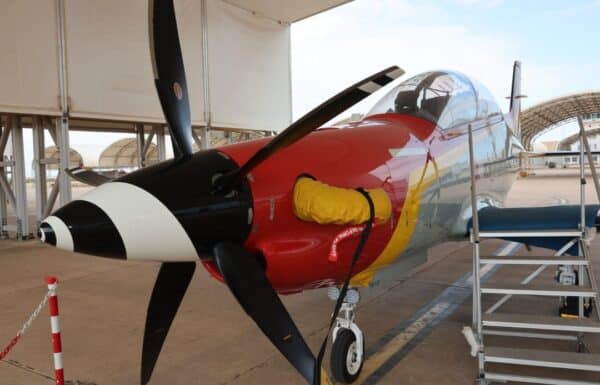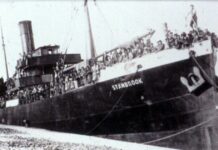The Minister of Defence, Margarita Robles, visited the General Air Academy (AGA) in San Javier, to look at the example of cutting-edge training with the Integrated Training System Plan, highlighting modernisation, digitalisation, and infrastructure improvement as key for the Armed Forces in Spain.
The visit also included a tour of the Pilatus PC-21, the new go-to training aircraft at the academy, almost 3 years to the day when the first were delivered, replacing the iconic C-101.
Spain’s military institutions are somewhat ahead of addressing the balance of equality, a journey which began long before the introduction of the new Parity Law this year, legislation which forces businesses and institutions to, in general terms, follow the 60/40 rule for male and female allocation of positions of power, and although there is still a long way for the military to go to achieve balance where possible, the current intake at San Javier of 483 students are made up of 75 women.
The General Air Academy (AGA), an example of cutting-edge training for the Armed Forces thanks to the Integrated Training System plan, and so the centre was proud to welcome the Minister of Defence, who has been able to see first-hand this flight training model of the ‘Pilatus’ aircraft with which future pilots of the Air and Space Force are trained.
The AGA is currently undergoing one of the most important modernisation processes in its history. Within the framework of the Ministry of Defence’s commitment to the digitalisation and modernisation of the Armed Forces, the academy is an example of the adaptation and implementation of the most cutting-edge tools that allow for cutting-edge training, combining the highest quality and optimisation of learning times.
The Integrated Training System (ITS) implemented in February and based on the ‘Pilatus’ aircraft has improved the capabilities of the academy where 120 flight courses were held last year with 8,200 real hours and 3,500 through simulation.
During her visit, the Minister of Defence was able to learn more about the simulators, highlighting the importance of technological adaptation in the training processes of the Spanish Armed Forces, of which she expressed her deep pride in their work.
She dedicated a few words to the students to congratulate them, first of all, for their choice of life, emphasising “the importance of serving the country and its citizens, as well as the training they receive in values and skills.”
The minister referred to the recent EA expedition in the ‘Pacific Skies’ exercise, which went around the world and was a great success, as an example of the capacity and professionalism of Spanish aviators who, as they shared with her, have realised that they have nothing to envy of other armies.
A total of 483 students, 75 of them women, are receiving training this year at the academy, located at the San Javier Air Base (Murcia) and directed by Colonel Luis González Asenjo.
The AGA was created in 1943 with the mission of training future officers of the Air and Space Force in the military, humanistic, aeronautical, physical, and cultural aspects. Since then, more than 11,500 students have passed through this military educational centre.
Next year, the AGA will see its profile elevated once more, when the future Queen of Spain, Princess Leonor, will join the trainees at San Javier, as she concludes the fourth year of her military training to lay the ground for being the head of state and, in a very high-profile way, addressing the balance of equality at the highest level, set to become only the third reigning Queen in Spain’s history (not including Joanna the Mad).
Her first year of training was at the General Academy of the Army of Zaragoza, which officially began in October last year, the second year she will continue with military training at the Marín Naval School, in Pontevedra, where she will embark on the Juan Sebastián Elcano training ship. Finally, the third year she will study at the General Air and Space Academy in San Javier in Murcia.
